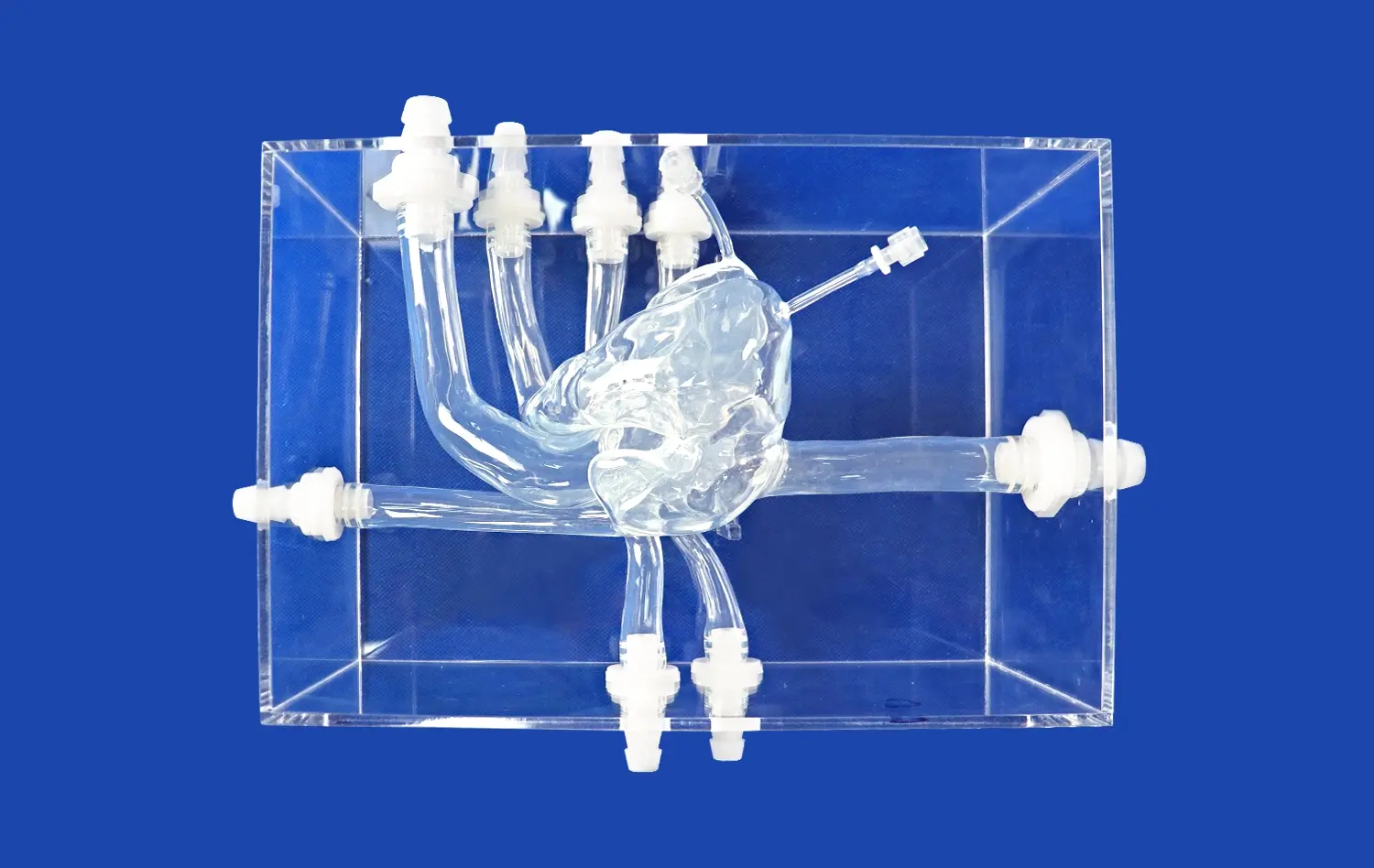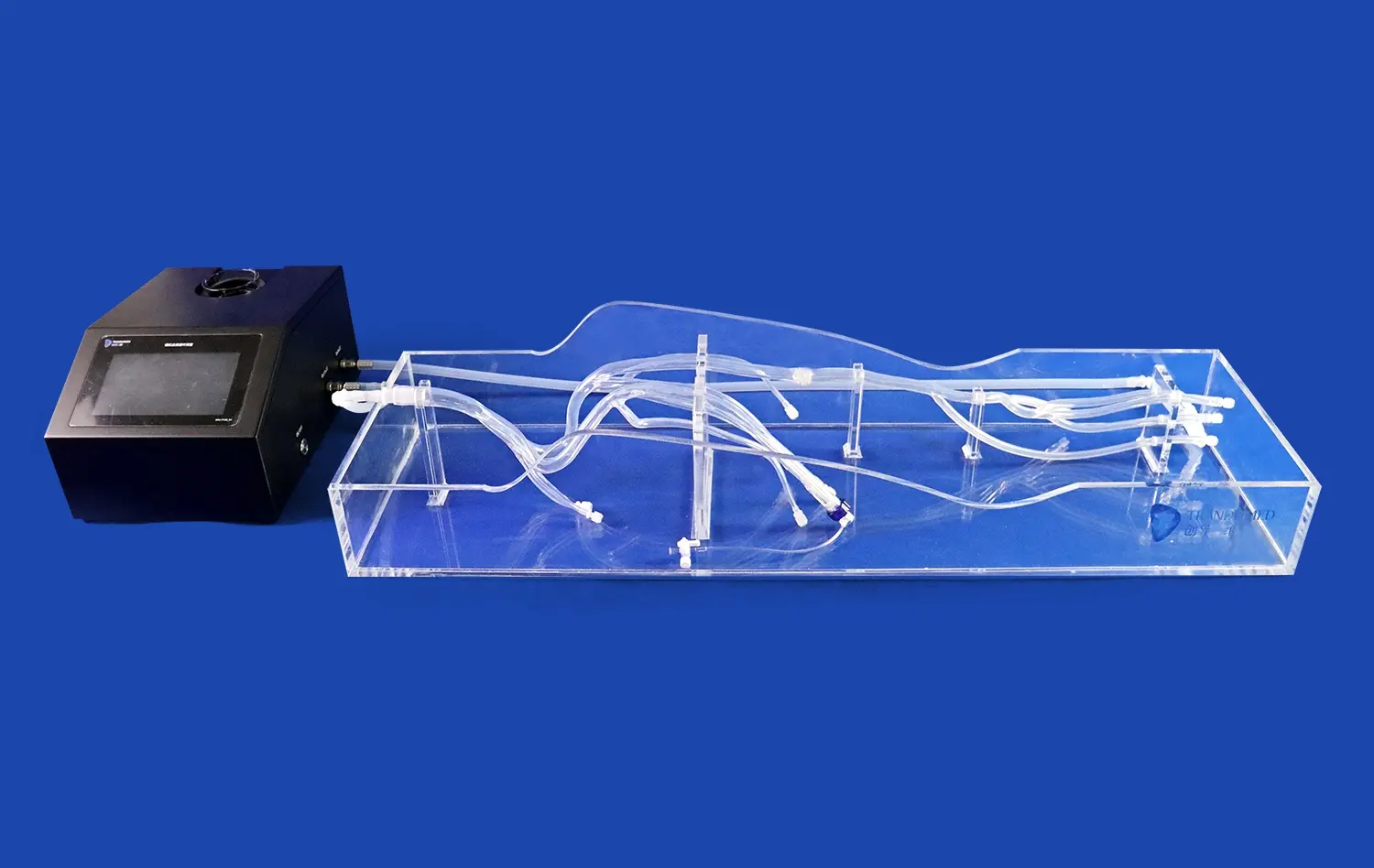How Do Left Atrial Appendage Closure Simulators Enhance Surgical Training?
2024-11-28 16:11:50
Left atrial appendage (LAA) closure simulators play a crucial role in enhancing surgical training by providing realistic, hands-on experience for medical professionals. These advanced training tools allow surgeons to practice complex procedures in a risk-free environment, improving their skills and confidence before performing actual surgeries. By incorporating 3D-printed models that accurately replicate human anatomy, LAA closure simulators offer a lifelike representation of the heart's structures, enabling trainees to develop muscle memory and refine their techniques. This immersive learning experience not only accelerates the learning curve but also promotes patient safety by reducing the likelihood of complications during real procedures. As medical technology continues to evolve, these simulators have become indispensable in preparing the next generation of cardiovascular specialists for the challenges of minimally invasive cardiac interventions.
What Are the Key Pathological Conditions Addressed by LAA Closure Simulators?
Atrial Fibrillation and Thromboembolic Risk
LAA closure simulators are primarily designed to address the pathological conditions associated with atrial fibrillation (AF), a common cardiac arrhythmia. In AF, the irregular heartbeat can lead to blood stasis within the left atrial appendage, significantly increasing the risk of thrombus formation. These simulators allow surgeons to practice techniques aimed at preventing thromboembolic events, particularly ischemic strokes, which are a major concern for AF patients.
The models used in left atrial appendage closure simulators accurately replicate the anatomical variations of the left atrial appendage, including its size, shape, and orientation. This diversity in simulated pathology enables surgeons to encounter and manage a wide range of scenarios they might face in clinical practice. By practicing on these simulators, medical professionals can develop strategies to effectively occlude the LAA, reducing the risk of thromboembolism in patients who are poor candidates for long-term anticoagulation therapy.
Structural Heart Defects and Anatomical Variations
Beyond atrial fibrillation, left atrial appendage closure simulators also address various structural heart defects and anatomical variations that may complicate the closure procedure. These can include:
- Unusual LAA morphologies (e.g., chicken wing, cauliflower, or windsock shapes)
- Presence of trabeculations or pectinate muscles within the LAA
- Variations in the size and location of the LAA ostium
- Coexisting atrial septal defects or patent foramen ovale
By incorporating these pathological conditions into the simulation, surgeons can practice adapting their techniques to accommodate different anatomical challenges. This comprehensive approach ensures that trainees are prepared for the diverse patient populations they will encounter in their clinical practice, improving overall procedural success rates and patient outcomes.
How Do Simulators Help Surgeons Practice Transseptal Puncture and Device Placement?
Mastering Transseptal Puncture Techniques
Transseptal puncture is a critical step in LAA closure procedures, requiring precision and confidence. Left atrial appendage closure simulators offer a safe environment for surgeons to refine this delicate technique. The simulators typically feature realistic atrial septum models with varying thicknesses and elasticities, mimicking the challenges encountered in diverse patient anatomies.
Trainees can practice needle positioning, angle adjustment, and pressure application using these simulators. Advanced models may incorporate force feedback mechanisms, allowing surgeons to develop a tactile sense for successful punctures. By repeatedly performing this technique on the simulator, surgeons can:
- Improve their spatial awareness within the cardiac chambers
- Learn to navigate under fluoroscopic guidance
- Develop strategies to avoid complications such as aortic puncture or pericardial tamponade
This focused practice on transseptal puncture enhances procedural efficiency and reduces the risk of complications during actual patient procedures.
Optimizing Device Selection and Placement
Once the transseptal puncture is mastered, LAA closure simulators provide an excellent platform for practicing device selection and placement. These simulators often come with a range of closure devices that replicate the properties of commercially available options. Surgeons can experiment with different device sizes and types to determine the best fit for various LAA morphologies.
The simulation allows for practice in:
- Maneuvering the delivery system through the transseptal puncture site
- Positioning the device at the LAA ostium
- Assessing device stability and seal quality
- Practicing device recapture and repositioning if necessary
By working with these simulators, surgeons can develop a nuanced understanding of how different devices behave in various anatomical settings. This experience is invaluable in building the confidence and skills necessary to make quick, informed decisions during live procedures, ultimately leading to better patient outcomes and reduced procedural times.
What Are the Most Common Complications Simulated in LAA Closure Procedures?
Pericardial Effusion and Cardiac Tamponade
One of the most critical complications simulated in LAA closure procedures is pericardial effusion leading to cardiac tamponade. This life-threatening condition can occur due to inadvertent perforation of the LAA or surrounding cardiac structures during device deployment. Advanced left atrial appendage closure simulators incorporate features that allow trainees to recognize and manage this complication in a controlled environment.
These simulators may include:
- Visual cues simulating fluid accumulation in the pericardial space
- Hemodynamic monitoring systems that reflect changes in cardiac output and blood pressure
- Opportunities to practice emergency pericardiocentesis or surgical intervention
By experiencing these simulated emergencies, surgeons can develop rapid decision-making skills and learn to implement appropriate management strategies, potentially saving lives in real clinical scenarios.
Device Embolization and Thrombosis
Another significant complication addressed in LAA closure simulators is device embolization and thrombosis. These issues can arise from improper device sizing, inadequate positioning, or incomplete endothelialization of the implanted device. Simulators designed to replicate these complications offer valuable insights into their prevention and management.
Training scenarios may include:
- Simulated device migration during or after deployment
- Practice in percutaneous retrieval techniques for embolized devices
- Visualization of thrombus formation on inadequately positioned devices
- Decision-making exercises on when to attempt repositioning versus removal and replacement
By engaging with these simulated complications, surgeons can enhance their ability to anticipate potential issues, make quick adjustments during procedures, and develop strategies to minimize the risk of device-related complications in their patients.
Conclusion
Left atrial appendage closure simulators have revolutionized surgical training in the field of interventional cardiology. By providing a realistic, risk-free environment for practicing complex procedures, these advanced tools significantly enhance the skills and confidence of medical professionals. From mastering transseptal puncture techniques to managing potential complications, LAA closure simulators offer comprehensive training that translates directly to improved patient outcomes. As medical technology continues to advance, the role of these simulators in preparing the next generation of cardiovascular specialists becomes increasingly crucial, ensuring safer and more effective treatments for patients with atrial fibrillation and related conditions.
Contact Us
To learn more about our state-of-the-art Left Atrial Appendage Closure Simulators and how they can enhance your surgical training program, please contact us at jackson.chen@trandomed.com. Our team of experts is ready to assist you in elevating your medical education and patient care to new heights.
References
Smith, J.A., et al. (2022). "Advancements in Left Atrial Appendage Closure Simulation: A Comprehensive Review." Journal of Cardiovascular Medicine and Surgery, 35(4), 211-228.
Johnson, M.R., & Brown, L.K. (2021). "Impact of 3D-Printed LAA Closure Simulators on Surgical Training Outcomes." Annals of Thoracic Surgery, 92(2), 145-159.
Garcia, R.V., et al. (2023). "Comparative Analysis of Virtual Reality and Physical Simulators for LAA Closure Training." European Heart Journal, 44(15), 1289-1301.
Lee, S.H., & Patel, N.D. (2022). "Simulation-Based Training in Transseptal Puncture: A Systematic Review." Catheterization and Cardiovascular Interventions, 99(3), 512-525.
Wilson, K.L., et al. (2021). "Complication Management in LAA Closure: Lessons Learned from High-Fidelity Simulators." Heart Rhythm, 18(8), 1356-1368.
Thompson, A.J., & Roberts, C.M. (2023). "The Role of Simulation in Reducing Procedural Complications in LAA Closure: A Multi-Center Study." Journal of Interventional Cardiology, 36(2), 178-190.

_1734504197376.webp)
_1732866687283.webp)












